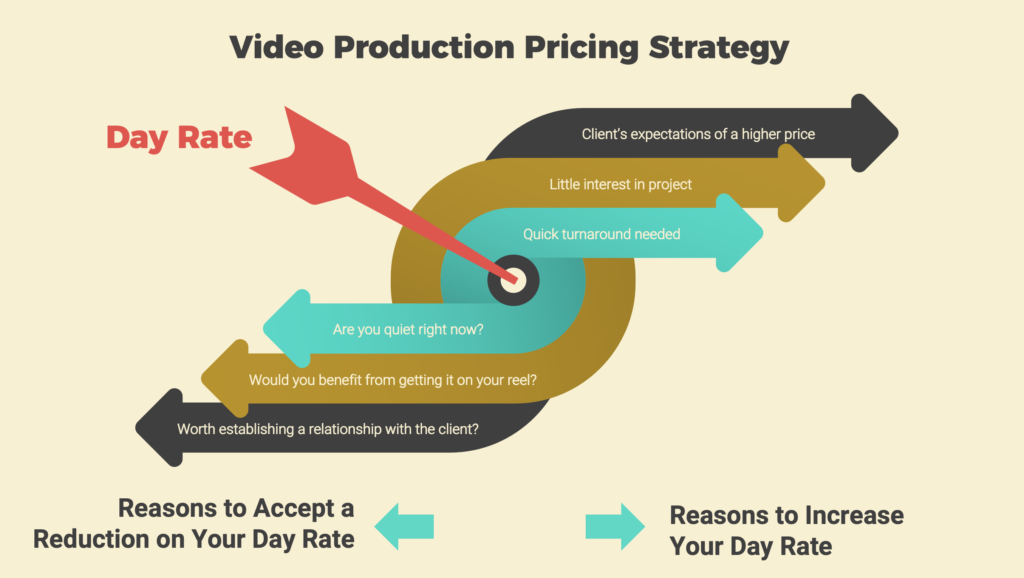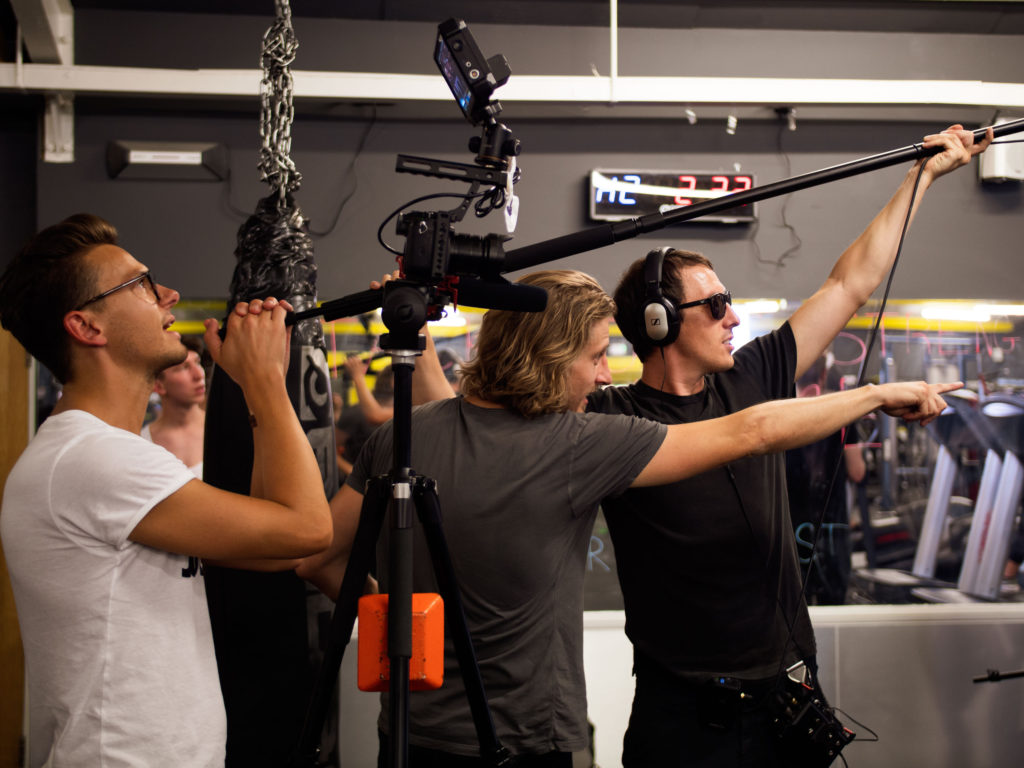Quoting for video production can often feel like a minefield. With so many factors to consider, it can become overwhelming. So, I’d like to guide you through my tried and tested process to ensure that you’re pricing your video productions right.
The short answer to this question is that your pricing should be a moving target that’s based around an unpublished day rate. Publishing and committing to a price list can often hamper you from growing your business. Some video pros do list their prices and this can avoid a lot of back & forth with the client, but as a team of one, or a small crew, the flexibility over setting your price on a project-to-project basis will ensure you will always be filming for what feels like the right price.
Setting your day rate
The first thing to point out is that you have to value yourself and your expertise. People are not asking you to paint a wall, so don’t price yourself like a painter! Your skillset should come at a premium, so price yourself as so. I like to start with a day rate rather than an hourly rate. But how much should your day rate be?
It’s simple to work out. How much do you need and want to earn? I appreciate this is a loaded question, but for argument’s sake, let’s say that number is $100,000 per year (before tax) working 47 weeks of the year. This breaks down to $425 a day, so this becomes your day rate. I’m not saying you’re going to be booked up every day of the year, but this would be the goal, and it’s a great place to start.
Are you working videography as a side hustle to your day job? Then maybe you only want to make $20,000 a year working 30 weekends a year. So this would make your day rate $333. If you want videography to be your full-time profession, it’s essential that you do this math. If you undervalue yourself, you may struggle to carve out a career in video production and keep the lights on.
This model is also applicable to small businesses. Working out your break-even day rate based on your expenses as a business plus salaries will ensure that you are starting at the right point for when a prospective client comes knocking.

Reasons to accept a reduction of your fee
Everyone wants something for nothing, so don’t be afraid to push back when you are being haggled down on price or asked to work for free. But, this raises another question, when should you reduce your fees, or even work for free?
The first thing to consider is, do you have the capacity to take on a project at a lower rate? If things are quiet for you or your business, then it makes sense to create some income and accept a smaller fee.
Is there value in doing the work? If you want to shoot more in sports but have no sports on your reel, offering your services at reduced fees or maybe even for free would make sense. You would be increasing the value in your marketing capabilities for future projects in this field.
Is it worth creating a relationship with the client? Maybe a particular client, such as a small start-up, is short of cash for marketing right now, but it’s obvious they are ambitious for the future. It might be worth taking a cut on your fees for the first few projects, establishing a relationship, and becoming indispensable by creating really great video content before demanding your regular fee as their business grows.
In my experience, a favour isn’t forgotten. So, if you have the capacity for a free day of filming, although the opportunity might not be clear right now, your generosity will certainly be rewarded in the future with a strong word of mouth referral, for example.
Essentially, if you are taking a cut of your base rate, consider what non-monetary value there is in the project.
Reasons to increase your fees
When starting out in charging for video production, it may feel natural to cut your fees regularly, but there are many reasons why you should consider quoting more than your day rate.
Is the client asking for a super quick turn around on their project? If so, then this should come at a premium. Or have you been asked to quote for a project in a field that you have no interest in pursuing, such as wedding videography, and you have limited capacity for new projects? If so, then over-quote and if the client agrees on the fee then it will be worth your while.
The last thing to consider is what I like to call the bottle of wine theory. Research has shown that people are more likely to buy a bottle of wine because it is more expensive. In other words, there is a perceived connection between quality and price, and rightly so, clients should get what they pay for.
But I’ve heard many video professionals double their prices and have seen an increase in business because certain industries (corporate in particular) will only consider your services if you are correctly priced. I’m not saying simply chance your arm for a better rate. Rather, consider the client and at what price would they expect to pay for video production.
There is a good chance that if you price yourself 50% cheaper than the competition, you may be seen to be too cheap – and therefore of a lesser quality – when in reality you have the expertise. You may even have significantly less overheads than your competitors and could happily charge a smaller fee. But, sometimes it is in your interest to raise your rate in line with the competition to meet the expectations of this client. Perfect for funding that new lens!
Know your client
It goes without saying, always try to find out as much about budgets and client expectations as possible. Pick up the phone and have a chat with them to learn more about the job, and if you’re feeling bold, just ask what their budget is.
In my experience, the worst that happens is they’ll just say they’re looking for quotes right now so there is no budget information to share. But, the best-case scenario is that you’ll know exactly how much their budget is, and this will give your quote a sound footing.
Know your business
Lastly, the fee is only half the story. The other half is time. If you’ve managed to agree your fee for 20% over your day rate then great! But have you considered the full day of editing that will be needed? What about those revisions? What about budgeting for music licencing? If you’re only charging the client for one day but the project takes 3 days, then your business will never be sustainable. Break down your quote sheet into filming, editing, then any extra fees. The client will want to see where their money is going, and a breakdown always keeps those accountants happy!
Also, find value in refining your processes. Become a more efficient editor, pack your gear well, and lean on time-saving resources such as Music Vine. When we started out, we’d spend hours sifting through average royalty-free music options looking for the diamonds in the rough. Music Vine essentially does this for you, helping you find the perfect piece of music for your video and potentially saving hours. Hours that can be spent on adding value to your business, or a good pub lunch.
As time goes on, you’ll hopefully find yourself busy with full-rate work. If this becomes the case, it’s time to increase your day rate. In my own experience in taking a small, garage production house to a full-service boutique content creation agency, Ranch Creative, we’ve shot plenty of stuff at cost to get in the door, or to get certain stuff on the showreel, then taken our opportunities to charge higher fees based on the system above. Things have balanced themselves out over time, and our agency has grown because of these fundamental rules on pricing strategy. I encourage you to lean on this guide to help you quote your next project and get paid right.




